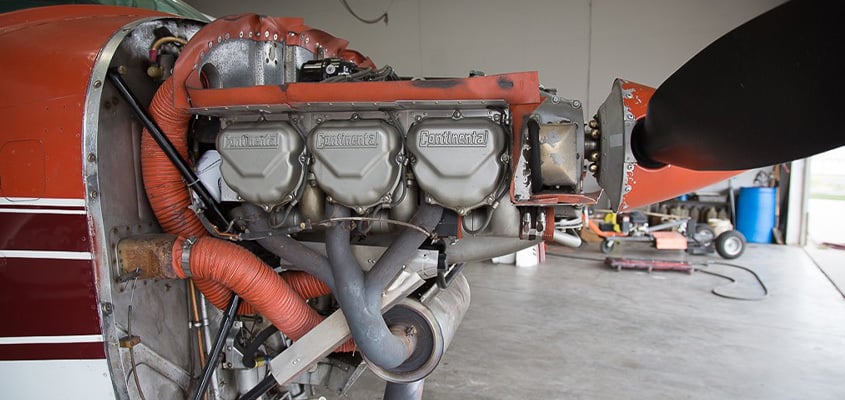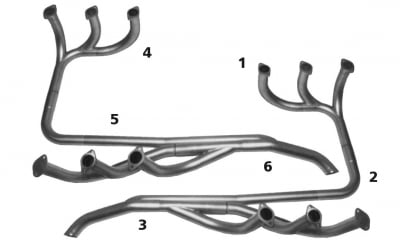Safeguarding the Skies: Risks & Mitigation Strategies for Aviation
The aviation industry places a premium on safety, but it’s not immune to risks. Technical failures, human errors, weather conditions, and security threats can all jeopardize the safety of passengers and crew. In this article, we’ll explore these risks and provide practical strategies for mitigating or preventing them. Whether you’re an aviation professional, enthusiast, or traveler, understanding these risks is crucial to ensuring safe and efficient operations. At the end of the day, our goal is to help you fly with confidence and peace of mind.
Technical Failures
Aircraft systems and component failures present significant risks to aviation safety. From engine malfunctions to avionics failures, these technical issues can have severe consequences, including accidents resulting in loss of life and property damage. Mitigating technical failures requires a proactive approach to maintenance and inspections. These should be done in compliance with the manufacturer’s recommendations and regulatory requirements. In addition to scheduled maintenance, advanced diagnostic tools and technologies can aid in the early detection of potential failures before they reach critical levels. Predictive maintenance and condition monitoring tools allow for the early identification of potential failures, enabling timely interventions and reducing the risk of in-flight incidents. Furthermore, the training and qualification of maintenance personnel are vital in ensuring that repairs and inspections are carried out accurately and efficiently. Effective communication among pilots, maintenance crews, and other stakeholders is another essential aspect of mitigating technical failures. Clear and open lines of communication allow for the reporting of any observed issues or concerns, facilitating prompt action and preventing potential hazards from escalating.
Human Error
Human error is another significant risk to aircraft safety. Errors can occur at various stages of aircraft operations, including design, manufacturing, maintenance, and operation. These errors can result in accidents, such as wrong repairs, incorrect settings, improper procedures, or misjudgments. Preventing human errors requires a culture of safety and adherence to standard operating procedures (SOPs). Therefore, proper training, qualification, and certification of personnel involved in aircraft operations are critical; they must be knowledgeable about the aircraft’s systems, procedures, and limitations and respond to emergencies quickly and effectively. Some best practices for training, such as Initial Training, Recurrent Training, Simulator Training, and Crew Resource Management (CRM), are outlined in our previous blog: 5 Best Practices for Increasing the Lifespan of Your Aircraft. Also, implementing robust human factors programs, such as CRM, can enhance aviation personnel communication, decision-making, and teamwork. Finally, effective documentation, clear instructions, and comprehensive checklists can minimize the risk of human errors.
Weather Conditions
Weather conditions can pose significant risks to aircraft safety, especially during takeoff, landing, and in-flight operations. Adverse weather conditions, such as thunderstorms, icing, turbulence, fog, or low visibility, can impact the performance and stability of an aircraft and increase the risk of accidents. Mitigating weather-related risks requires thorough weather analysis and forecasting for flight planning and decision-making, compliance with weather-related regulations and guidelines, and proper training of pilots in weather-related procedures. Maintenance and inspection of aircraft for weather-related vulnerabilities, such as icing protection systems, are also crucial. So ensure your aircraft’s safety by working with professionals with years of experience and familiarity with various aircraft like Knisley Welding Aircraft Exhaust System.
Security Threats
Security threats can pose catastrophic risks to aircraft safety, including acts of terrorism, hijacking, sabotage, or unauthorized access to sensitive areas. These threats can endanger lives, damage aircraft, and cause widespread fear and disruption. Preventing security threats requires robust security measures, including strict access controls, screening procedures for passengers, baggage, and cargo, surveillance systems, and security training for personnel. In addition, compliance with aviation security regulations and guidelines, coordination with law enforcement agencies, and implementation of threat intelligence and risk assessment measures are critical in enhancing security preparedness. Maintaining situational awareness and reporting any suspicious activities or threats can also aid in preventing security incidents.
Other Risks Jeopardizing Safety
Solo Pilot Driving
Imagine the thrill of sitting in the cockpit, soaring through the clouds, and commanding an aircraft all on your own as a solo pilot. It sounds exhilarating, doesn’t it? However, it’s essential to recognize that flying solo can pose a significant threat to aircraft safety. Aircraft crashes have been frequently associated with single-pilot operations. The immense responsibilities of flying alone can present challenges that compromise safety. One of the primary risks of solo flying is pilot fatigue and sleepiness. Flying long hours without a co-pilot to share the workload can lead to exhaustion, impairing judgment and reaction times. Consequently, mistakes can occur, with potentially catastrophic consequences. This emphasizes the crucial importance of having two pilots on board. With two sets of eyes, ears, and hands in the cockpit, the workload is distributed, reducing the risk of fatigue and errors. Moreover, it facilitates better decision-making, more effective communication, and an enhanced level of safety for everyone on board. Flying an aircraft is not a one-person show; it requires a team effort characterized by constant vigilance, precision, and coordination.
Distractions in the Cockpit
Aviation is an industry that demands the highest level of professionalism and focus. During a flight, the pilot and other crew members are responsible for the aircraft’s and its passengers’ safety. However, even the slightest distraction in the cockpit can disrupt the pilot’s concentration and hinder their ability to handle the flight effectively. Distractions can come in many forms—unnecessary talk, interruptions, or misconduct by staff members—and can pose a serious threat to flight safety. So prioritize a distraction-free cockpit environment and ensure that all crew members adhere to the highest standards of professionalism. Unskilled and negligent personnel can be a major problem, and the consequences can be severe.
Repeated Flights
An airplane travels at high speeds, encounters varying weather conditions, and undergoes tremendous stress during takeoff and landing. However, in the rush of tight schedules and busy travel itineraries, with return flights not having a break or maintenance check, this heavy machinery can suffer from wear and tear, leading to potential malfunctions or failures that can jeopardize the safety of the aircraft and everyone on board. Therefore, adhering to specific protocols for handling an airplane safely and proper rest and maintenance checks are of utmost importance. It’s not just about getting from point A to point B but doing so with the highest level of caution and care.
Final Words on Aircraft Safety
The safety of an aircraft is a multifaceted endeavor that requires vigilance, adherence to regulations, continuous training, and effective communication among all stakeholders involved in aircraft operations. As aviation professionals and enthusiasts, it is our responsibility to proactively address and mitigate risks to ensure the safety of aircraft and its occupants, minimize accidents, and maintain the integrity of the aviation industry. After all, prevention is better than cure. Related to that, we have a blog that discusses the common practices that reduce the lifespan of an aircraft, which you can read here: 4 Practices That May Be Reducing the Lifespan of Your Aircraft. By following best practices such as regular and thorough maintenance, adherence to standard operating procedures, robust human factors programs, thorough weather analysis, and implementation of security measures, we can minimize the risks and ensure safe and efficient operations.



